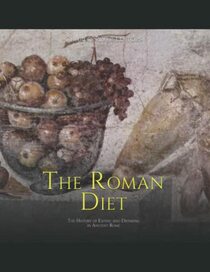This book included some fascinating facts. One was that bread required ovens which common folk didn't have. Therefore, they bought bread from bakers. What clicked with me was that in the French Revolution, bread prices skyrocketed and helped push the people to revolt. Thus, bread was not produced in the home until much later. I always thought that bread was a home-baked product. That must not have been true until much later.
I was floored that dormice (small mice) were Roman dinner delicacies and status symbols. Carrots were grown and eaten; they were other colors, not the orange we are familiar with today. I have seen purple and yellow carrots, but today they are considered delicacies and rare finds. Oranges and lemons were known but were used for medicinal purposes rather than foods.
Fashionable Romans copied the Greek model of lounging around a small table, eating while reclining. However, everyday Romans sat at a wooden table with backless stools, while enslaved people sat on the floor or a mat while eating. This remained until the time of the barbarian invasions of Italy when dining habits changed significantly.
Much of the book explains the Roman use of wine (a bottle of wine for every person/day). It was important for food and wine to be available at reasonable prices, and many of the campaigns were undertaken to secure food supplies because Rome was incapable of meeting the city's needs.
I was floored that dormice (small mice) were Roman dinner delicacies and status symbols. Carrots were grown and eaten; they were other colors, not the orange we are familiar with today. I have seen purple and yellow carrots, but today they are considered delicacies and rare finds. Oranges and lemons were known but were used for medicinal purposes rather than foods.
Fashionable Romans copied the Greek model of lounging around a small table, eating while reclining. However, everyday Romans sat at a wooden table with backless stools, while enslaved people sat on the floor or a mat while eating. This remained until the time of the barbarian invasions of Italy when dining habits changed significantly.
Much of the book explains the Roman use of wine (a bottle of wine for every person/day). It was important for food and wine to be available at reasonable prices, and many of the campaigns were undertaken to secure food supplies because Rome was incapable of meeting the city's needs.




